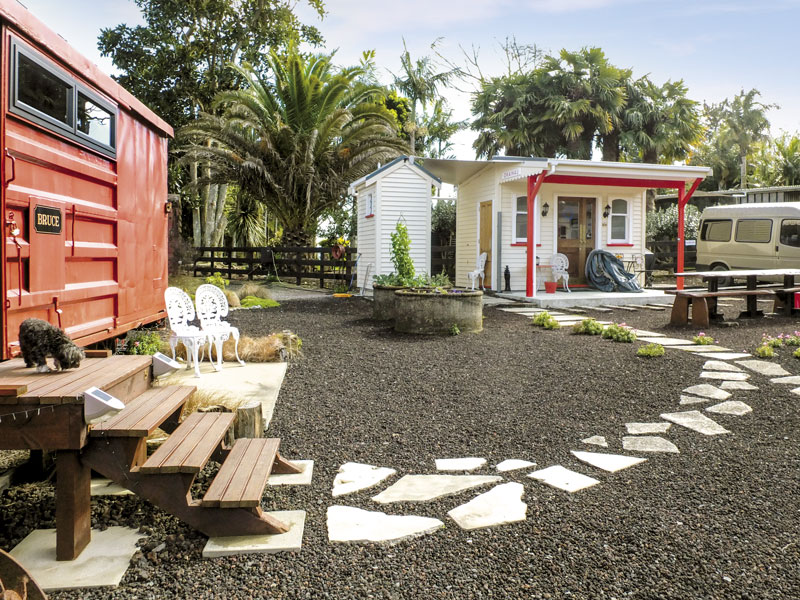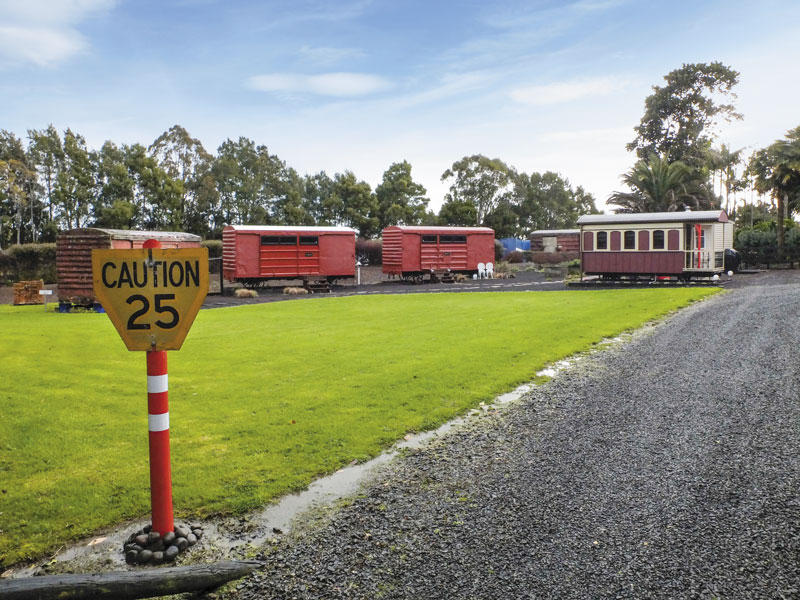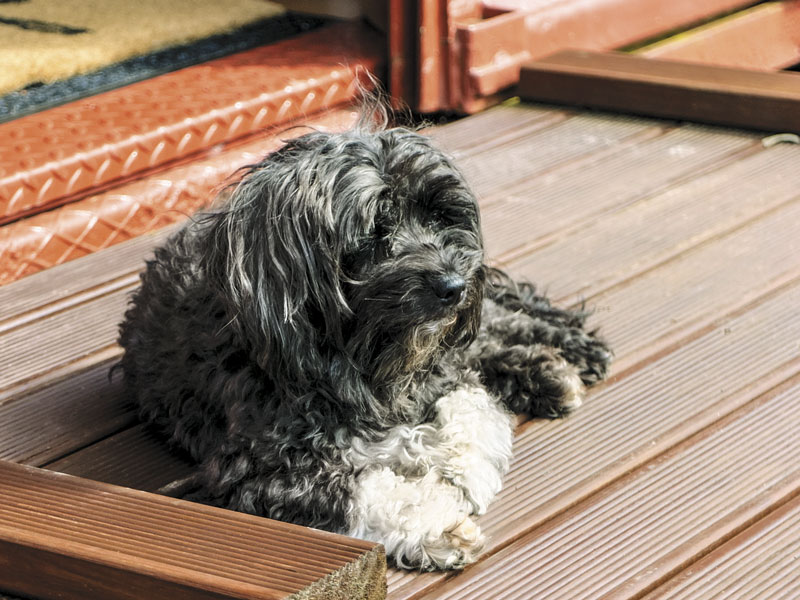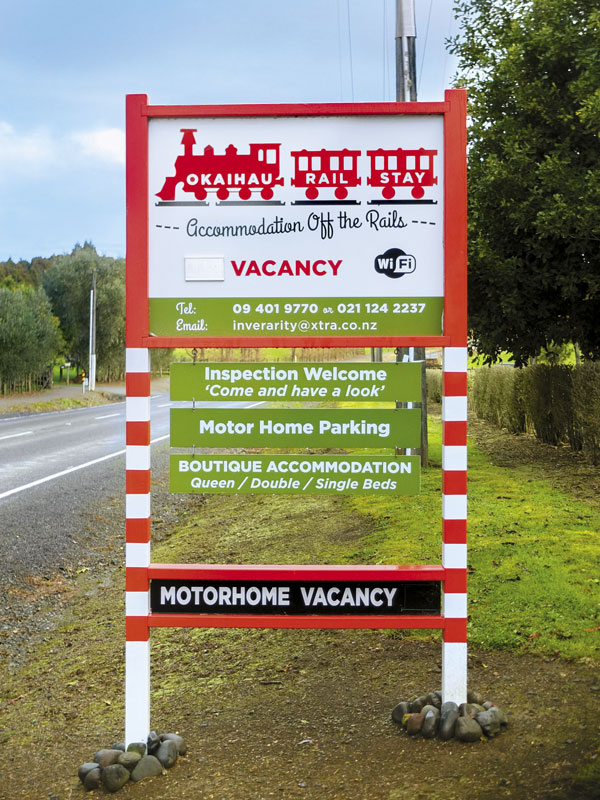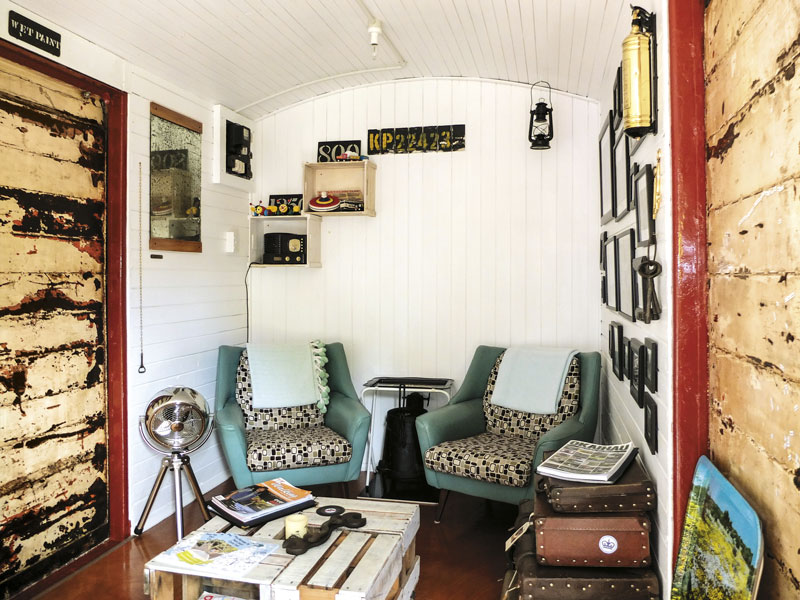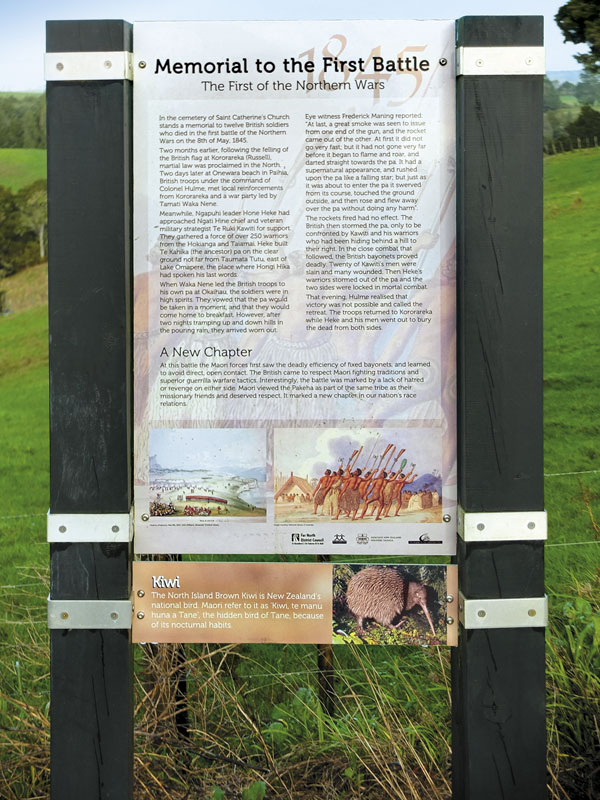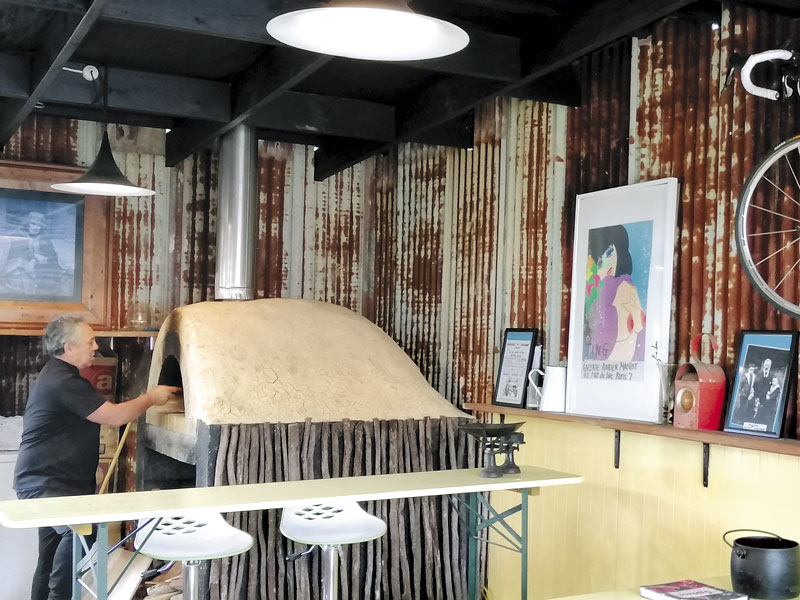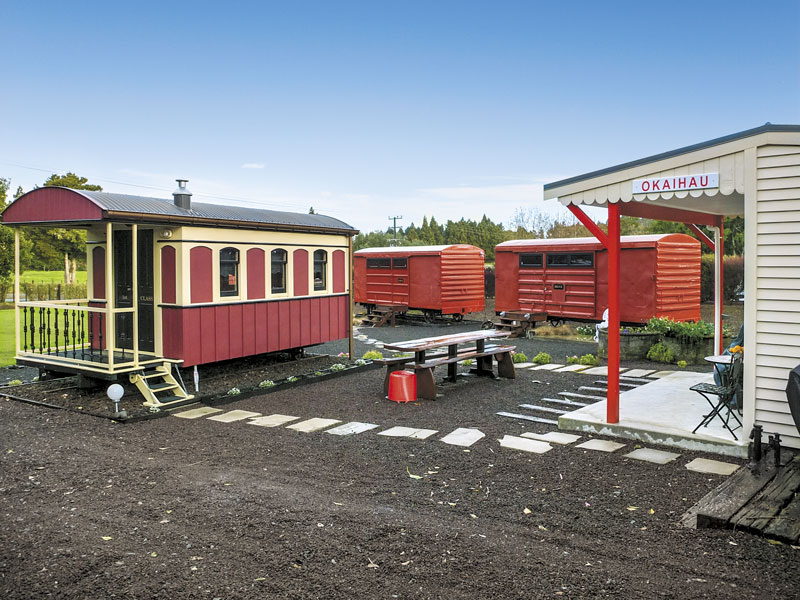It’s easy to get a handle on New Zealand villages that have morphed from their original purpose into tourist hubs. Travellers’ needs are catered for, and everything is organised and explained. But RV travel also allows us to explore small settlements that are under the tourist radar.
They may not seem much on the outside but, with a bit of digging, unexpected treasures can be discovered. Travellers heading to the top of the North Island on SH1, for instance, will probably whizz past the turn-off to the small village of Ōkaihau with no more than a blink. And yet, observed with eyes wide open, an interesting story unfolds.
Ōkaihau means ‘feast of the winds’ in Māori, and it was true to the name when we parked in the village main drag known as Settler’s Way. Ōkaihau is the highest point on the Twin Coast Cycleway from Opua to Horeke. Three groups of cyclists emerged from the new bright-blue Kiwi Kai café and peddled down the road, battling so hard against the breeze I doubt they noticed any details.
But the old memorial hall would be hard to miss. It lends a lot of character to the town and is still in frequent use for funerals and Saturday night dances. The largest complex is Ōkaihau College, which provides secondary education for children widely scattered around the area.
One 10-year-old boy proudly told me that to get to school, he travels by car from Horeke to Rawene, crosses the harbour by ferry to Kohukohu and then buses through Mangamuka to Ōkaihau. The first school was opened here in 1865 when the one teacher taught 21 children in a log cabin built by the community.
Today there is a primary school with 120 pupils and the college has a roll of 240. We parked on Settlers Way alongside Ōkaihau’s butchery, which is remarkable in that it has been on this site for the past 80 years. Today it is owned by Fran and Clint Clayden. “Come on in,” said Fran as I stood gazing at the meat selection. “Come in for a laugh if you don’t want a sausage. We love swapping stories.”
The couple came to Ōkaihau from Matakana two years ago and have fallen in love with the place. “For a tiny town, it has such a wonderfully cohesive community,” said Fran. Clint makes his own bacon and 12 different types of sausage. I can vouch for the pork and watercress and the beef and blue cheese.
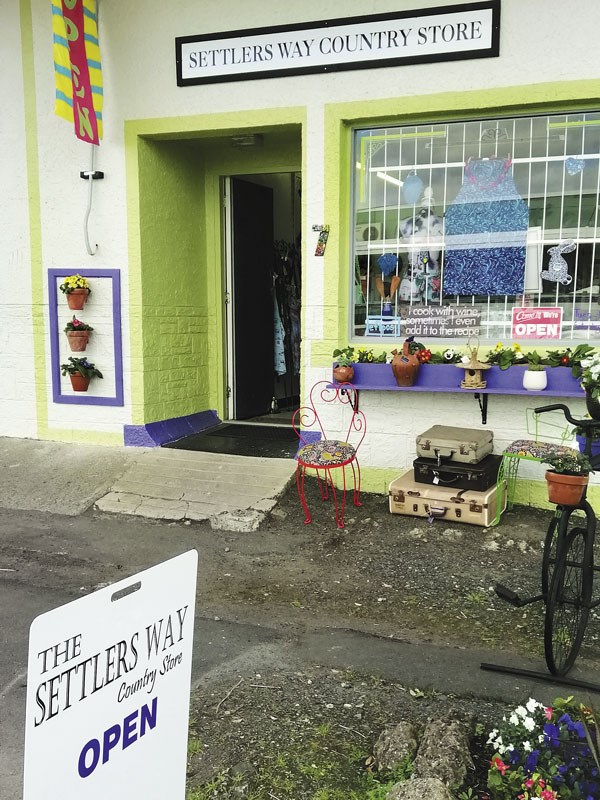 |
Jacqui’s enterprise in an old service garage |
A few doors away, standing out in a bright purple and green livery, is Settlers Way Country Store. Once it was a service garage, and now Jacqui Pool displays a collection of clothes, collectables and crafts so appealing that my eftpos card jumped right out of my pocket.
Jacqui is also an organiser for Two Ponga Park, which is at the entrance to Ōkaihau off SH1. A delightful terraced walkway landscaped with flowers and trees leads down to a small stream. On the higher flat is a designated freedom-parking area with two well-maintained toilets.
A French couple who’d stayed overnight introduced themselves and during the conversation pointed out the park’s signage. “Never ’ave I ’eard a toilet called a ponga,” sniggered Adele. The name derives from a two-headed ponga tree that once grew nearby, but not wanting to ruin Adele’s merriment, I didn’t enlighten her.
Still in the park, on the other side of the road, is a short, wide-mouthed concrete tunnel, the only remnant of Ōkaihau’s heydays in the 1920s when the village was the northernmost terminus of New Zealand’s railway system. In the mid-1930s, the line, which was intended to be pushed through to Kaitaia, was almost completed a far as Rangiahua in the Waihou Valley.
But terrain for the onward route to Kaitaia was so steep and difficult, further construction was deemed too expensive. The completed section from Ōkaihau to Rangiahua was ripped up, and Ōkaihau remained the northernmost railhead for the next 50 years. It was finally closed on 1 November 1983.
Now the station is gone and, apart from the tunnel, nothing remains of the days when this quiet little town bristled with activity. The old railway corridor forms part of the cycle trail. But all is not forgotten. On the outskirts of town along Settlers Way, a collection of neatly arranged railway carriages comprises Ōkaihau Rail Stay, which is also an RV park.
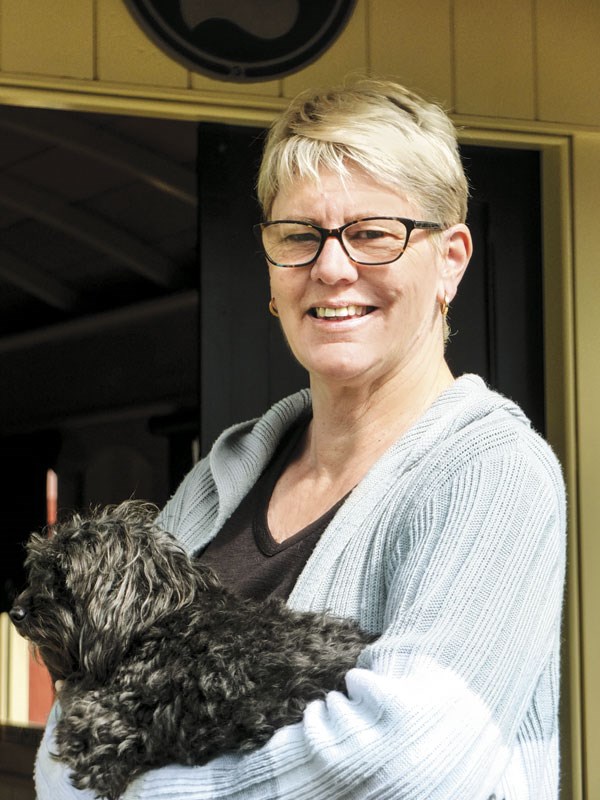 |
Noeline Inverarity, the owner of Ōkaihau Rail Stay, with ‘general manager’ Maeo |
It was set up by long-term residents Noeline and Peter Inverarity, a couple who seem attracted to the subject of transportation. In 2008, they set up their own road-transport company and a few years later had the idea of catering for people who were transporting themselves through the town by bike, car or RV, and to base the accommodation on the history of the railways days.
They employed a local carpenter to build a ‘railway station’ modelled, but not to scale, on a photograph of the old Ōkaihau Station. It serves as an office and kitchen. They attached toilets and showers and had a replica goods wagon built to provide accommodation. “It was quickly apparent that one carriage wasn’t enough,” said Noeline. “I went on the hunt for some genuine goods wagons.”
Nearby she found three that were being used as storage sheds. They were rough and rusted but lined with native timber and structurally robust. “Restoring and setting them up was way bigger and more costly than I envisaged,” she said. The result, however, is delightfully retro with intriguing details and memorabilia from the old railways days.
These include a long, outdoor table created from an old pūriri tree. It is inset with metal date nails, once attached to the end of each railway sleeper as a record of when it was laid. The new railway ‘yard’, now the final resting place of the three revamped wagons, is landscaped with paths and clumps of planting.
RVs park behind a hedge on a spacious and fenced area of grass. Just before we reached the Ōkaihau Rail Stay, we came across another point of interest that had little to do with the railway. St Catherine’s Church (1875) had been serving the faithful for more than 50 years before the trains came to town.
This charming little ‘House of God’ was built of pit-sawn timber in a Gothic style and features a steep roof and tall spire. The graveyard contains the headstones of up to four generations of local families. In the cemetery, there also stands a memorial to the 12 British soldiers who were killed near Ōkaihau in the first battle of the Northern Wars in 1845.
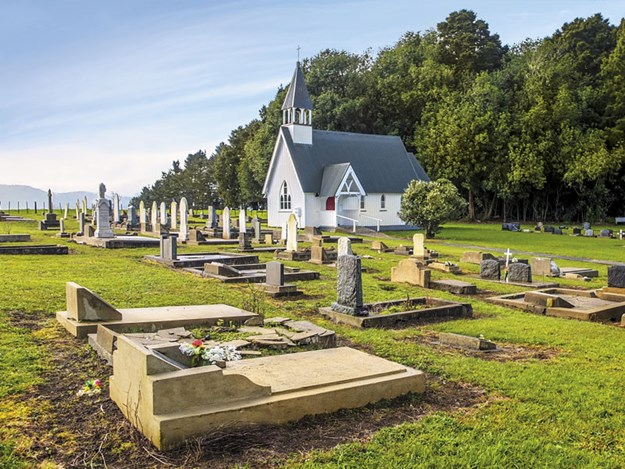 |
St Catherine’s Anglican Church and its interesting graveyard |
Unable to beat Hōne Heke’s warriors, the British troops retreated, and Heke and his men buried those who had fallen from both sides. The remains of the fallen British soldiers were later recovered from the battleground and re-interred in the church’s cemetery.
Walking around the gravestones reminded me that I was lucky to be above ground. In the land of the living, I was able to drive on along Horeke Road and appreciate the stunning vista of the vast Waihou Valley dotted with stands of kahikatea, pūriri and tōtara, and then the plunge down the exhilarating switchback road that descends into the Utakura Valley.
No shadow of death here; Utakura is one of the loveliest valleys I’ve seen. We turned right at its end, and a more accessible road led us back to SH1. This deviation en route to the top of the North Island added two days to the journey. It was time well spent, which is the whole point of exploring in an RV.
Find out more
- Ōkaihau is on SH1, about 32km north west of Kawakawa.
- Kiwi Kai café is on Settlers Way.
- Find out more about the rail stay at okaihaurailstay.co.nz

